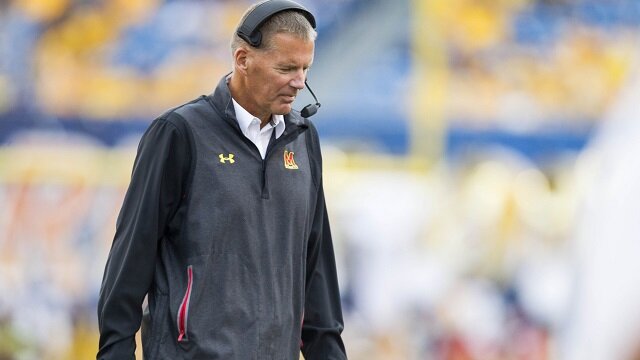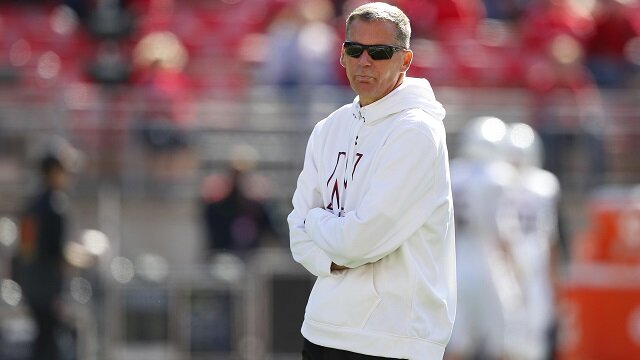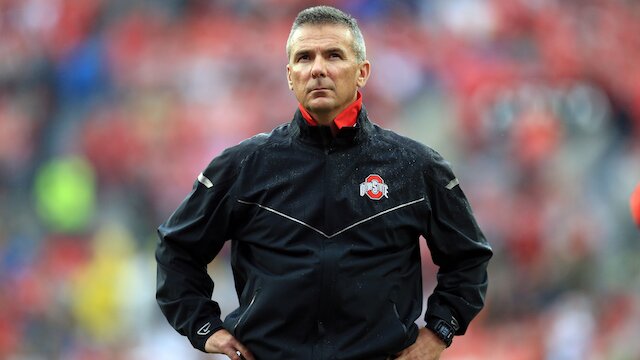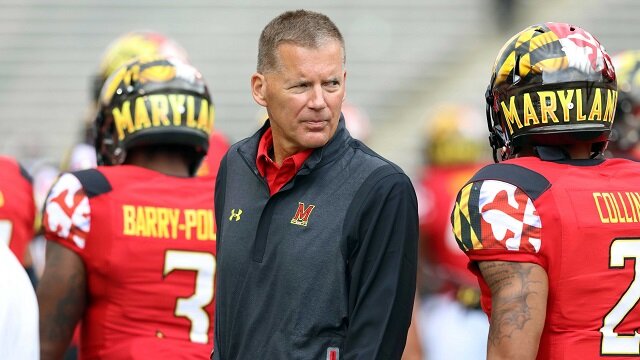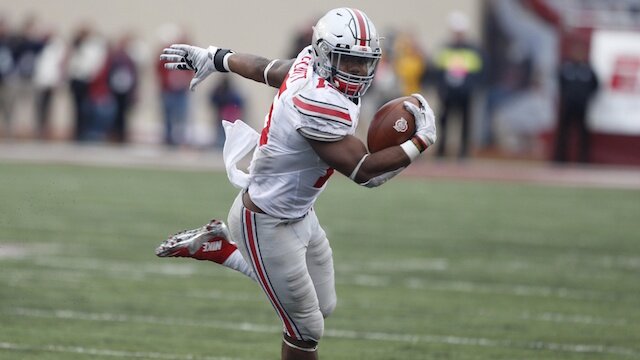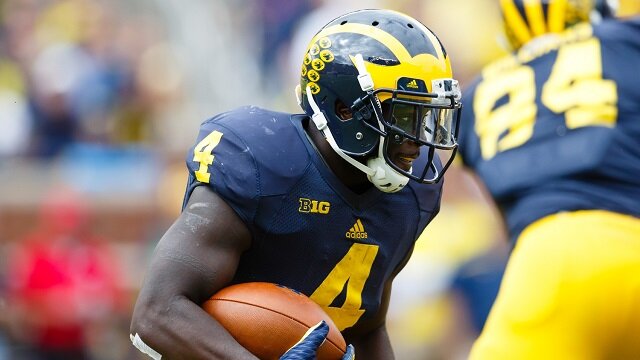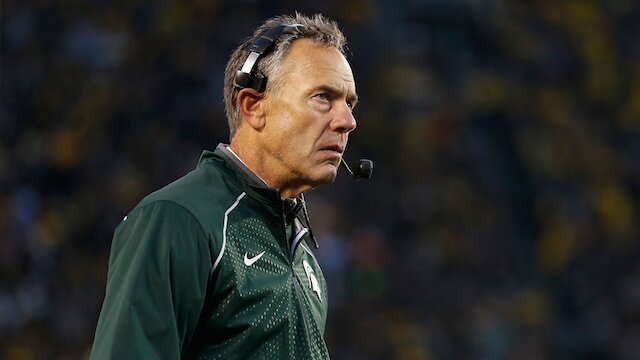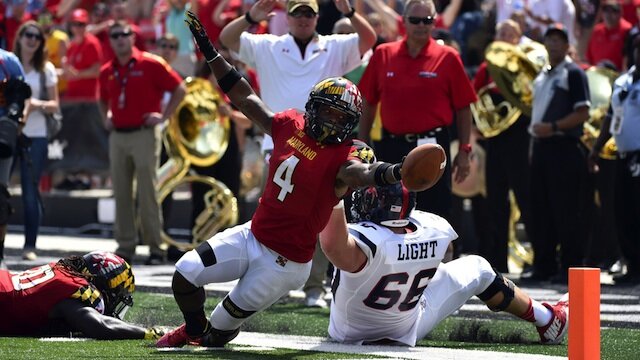
Big Ten football isn’t having its best season, but it’s still a stretch to think the Maryland Terrapins football team will be competitive in their new conference any time soon.
If you can’t beat ’em, join ’em?
The Terps are facing some unusual struggles this year (fifth-string linebacker-quarterback!) but the program overall just doesn’t have the personnel – or the coaching – to hold up against Big Ten opponents.
Maryland is 4-44-1 all-time against the Big Ten, according to an ESPN report. Most of those games – and losses – were to Penn State. The Nittany Lions and Terps played regularly from 1960 until 1993, when Penn State joined the Big Ten.
The Big Ten is already positioning Penn State and Maryland as primary rivals in the conference. Those teams have long battled over recruits in the Maryland/D.C. area; Maryland fans frequently complained about former coach Ralph Friedgen losing top local talent to PSU and West Virginia.
Maryland coach Randy Edsall says the change will make in-roads into fertile recruiting areas in the Midwest, but it’s hard to imagine the Terps competing for the same student-athletes as Ohio State, Michigan, and Nebraska.
It could even have the opposite effect: Maryland might not be able to attract players who are considering those legendary football programs, but current Big Ten members will gain even more access to recruits in the Baltimore/D.C./Northern Virginia region.
Maryland’s offensive coordinator, Mike Locksley, was hired in part because of his recruiting prowess and strong ties to high school programs in the D.C. Metro area. Locksley recruited a number of players from the area while serving as offensive coordinator and quarterbacks coach at Illinois from 2005-2008, but whether he can bring players from traditional Big Ten territory to Maryland is a different story.
Recruits may or may not choose to come east and play for Maryland, but the university is confident that the Big Ten’s fans will travel to College Park and fill its mostly empty football stadium. Even in good years, Maryland fans haven’t always shown up to support their team in person.
In 2010, the team finished the regular season 8-4 landed in the Military Bowl in D.C., passed over by more favorable bowls for schools with fewer wins, in part because of the perception that Terps’ fans wouldn’t travel to the game.
Schools like Ohio State, Penn State, Michigan, Wisconsin, and Nebraska have rabid fans that travel well, and especially in the case of Penn State, they have alumni and supporters in the Maryland/DC area, which is what matters to a Maryland administration that just wants bodies in seats, regardless of what colors they’re sporting. (Good thing Ohio State, Wisconsin, Nebraska, Indiana and new Big Ten member Rutgers all have similar color schemes.)
Increasing the cash flow into the Maryland athletics program will have obvious benefits, most immediately the reinstatement of the teams that were cut earlier this year due to lack of funding, but it will take much more than money to improve the football program.
Moving to the Big Ten won’t automatically make Maryland better able to recruit, and it certainly doesn’t make them more likely to win games. That starts with coaching – coaches who can recruit and who can win games.
Edsall hasn’t proven he can do that. He was 1-16 against Top 25 teams at his last job at UConn, and Maryland’s will ultimately face many more Top 25 teams in the Big Ten than in the ACC.
The Terps might have a larger pool of student-athletes from which to recruit, but given the choice, who’d want to play at Maryland for Edsall, rather than at Ohio State for Urban Meyer, a two-time BCS championship winning coach, or at Michigan, the nation’s winningest football program of all time?
Edsall has an all-time losing record as a head coach (80-87), and a 4-7 season that’s an improvement over the previous year isn’t going to cut it, no matter what conference Maryland joins.
If the Terps can’t even compete in the ACC, they’re not going to be successful in the Big Ten.
Moving to a stronger, more stable conference with a lucrative television deal might be good for the overall athletic department’s finances, but unless the Terps make some drastic internal changes while they’re at it, the conference change is only going to make it harder for Maryland to field a winning football team.
–
Justine Hendricks is a Pac-12 and ACC Columnist for Rant Sports and is the founder and editor of Sports in Stilettos. Follow her on Twitter: @SportsStilettos
 Share
Share 


